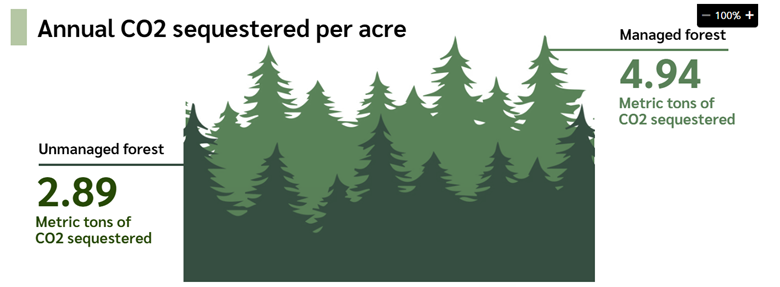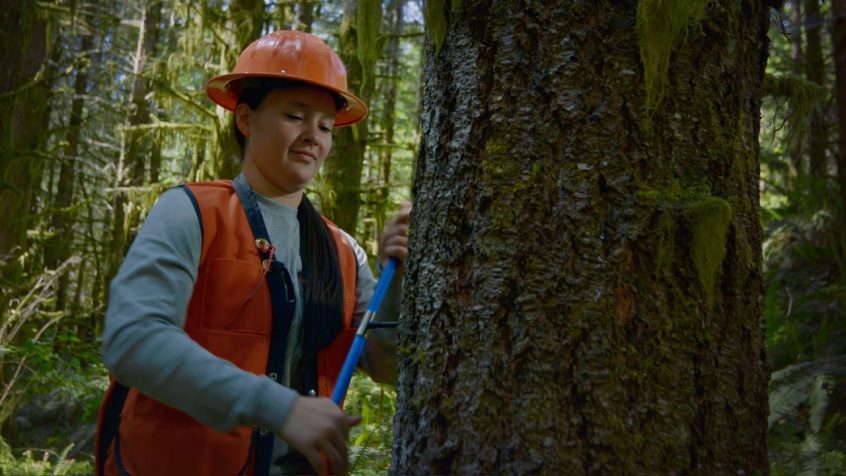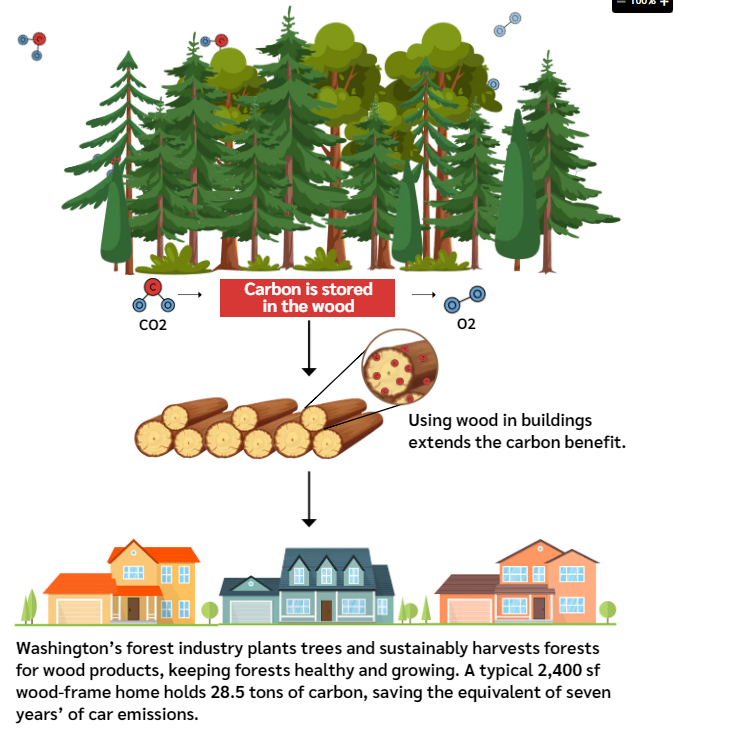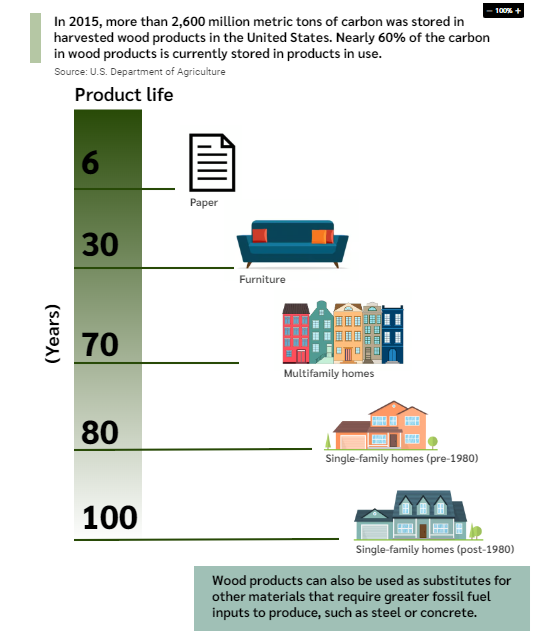Washington state has set an ambitious goal to reduce greenhouse gas emissions 95% by 2050. The health of our forests will play a critical role in this reduction. While the significant role trees play in capturing carbon dioxide from the air is well known, the fact that harvested wood also aids in storing carbon is less familiar to many. Forest management and harvested wood will play an important part in reducing CO2 and mitigating climate change in Washington and beyond.
As we learned in middle school science, the production of oxygen in trees is one beneficial result of photosynthesis. Photosynthesis is the ability of plants to convert sunlight to energy in the form of sugar. Tree leaves and needles absorb CO2 during this process. They produce and store carbohydrates, in the form of wood, and release oxygen into the atmosphere as a byproduct of photosynthesis.
A tree’s ability to capture carbon dioxide varies by individual tree. Younger, rapidly growing trees absorb more CO2 than older, slower-growing trees. More than half the carbon stored in the world’s forests is held in younger trees, according to a recent University of Birmingham study. Replacing slow-growing older trees with faster-growing younger trees increases carbon removal within the entire forest. Post-harvest, wood products also store carbon, keeping it out of the atmosphere, and will continue to do so for many decades, prolonging the benefit. As the demand for new construction continues to grow, expected to double by 2060, wood remains the best source for low-carbon building.
However, mortality of trees in Washington’s forests continues to rise at significant rates, having increased by more than 50% in the last half-century. Since more than half of Washington’s forests are unmanaged, restricted from harvesting, annual mortality on unmanaged federal forests is now at 71% per year, as trees decompose and decay, putting them at risk for wildfire and depressed growth. This increases the vulnerability of unmanaged and overstocked forests to wildfire.
As fewer acres are being managed and cared for, forest fires are increasing at a rapid rate, with acres burned increasing at five times the volume today than during the 1980s and more than double the acres burned in the 2000s.
Washington’s growing population has also led to a reduction in forestlands in the state. Two and a half million acres of woodlands have been lost to settlement conversion since 1938.
The Washington Forest Protection Association is a trade association representing private forest landowners in Washington state. Members are large and small companies, individuals and families who grow, harvest and regrow trees on about 4 million acres.



